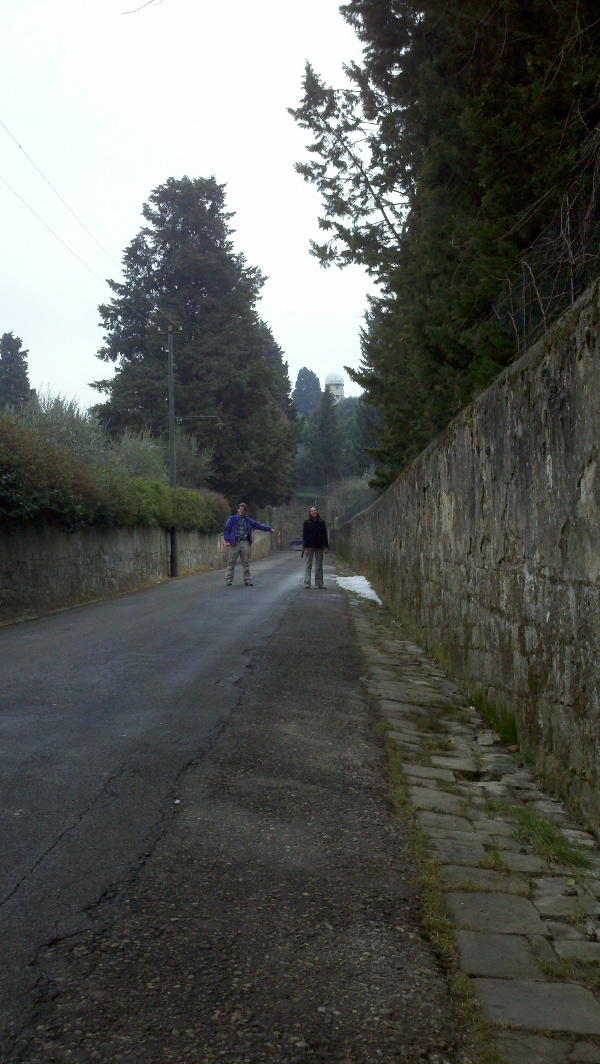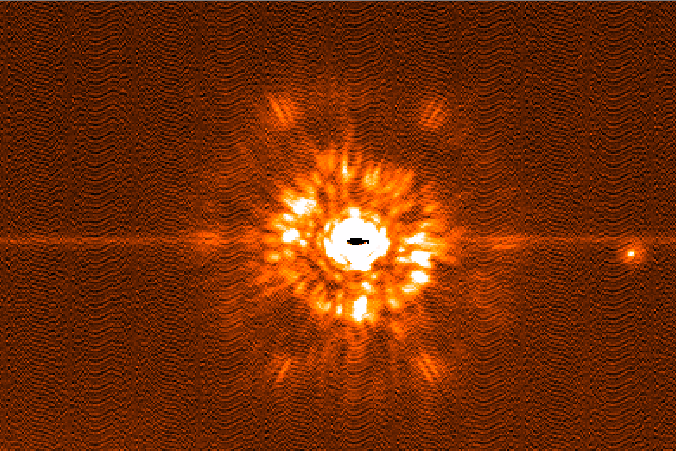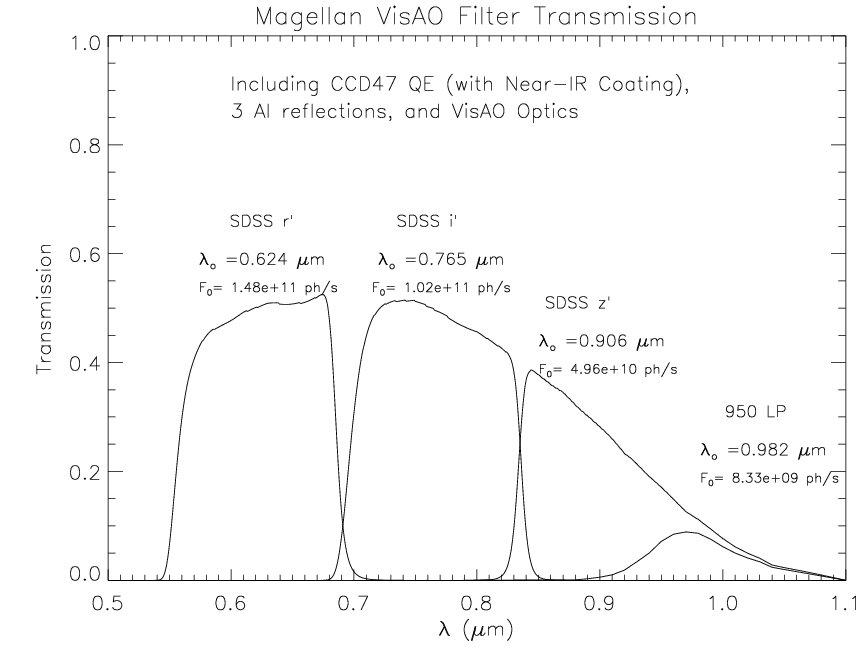We (Laird, Jared, Katie, Alfio, Armando, Marco, Runa, Enrico, Simone, Luca, Carmelo, and Alessandro) have been working hard all week here at Arcetri to prepare for the Pre-Ship Review.
For today’s installment we have a video of the VisAO PSF as we test closing the loop and adjusting the gains. Laird is narrating and Katie is operating MagAO in this clip.
Descripion of video: The Magellan AO system loop closing and opening at 1kHz on an 8.5-mag guide star in 0.8” seeing with 33 mph (15 m/s) wind. The image viewer is showing our SDSS i’ PSF, and we have selected a 32×32 subwindow of the CCD 47 (our VisAO science detector) to operate at 42 frames per second. You can see the impact on Strehl ratio (calculated from slope telemetry) and FWHM (fitting the PSF in real time) when the loop gains are low.
First we see the closed-loop PSF. Then the loop is opened. When we close the loop, we start with low gain and slowly ramp up first the low-order gain and then the high-order gain. MagAO is operated with modal gains so that each mode (up to 400 controllable modes) can be operated with its own gain. The automated gain algorithm searches for the best gain for each mode that minimizes the WFE. However, gain can also be adjusted by hand, in groupings of low-order (tip/tilt), mid-frequencies, and high-order (above 100 modes for bin 1).


